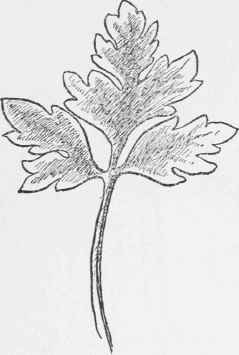Crowfoot Family. Tufted Buttercup. Early Buttercup. Ranunculus Fascicularis
Description
This section is from the book "Our Early Wild Flowers", by Harriet Louise Keeler. See also: Newcomb's Wildflower Guide.
Crowfoot Family. Tufted Buttercup. Early Buttercup. Ranunculus Fascicularis
Ranunculus, a little frog, because some species live near water.
Perennial. Open woods and rocky hillsides. New England, Ontario, Manitoba, south to North Carolina and Texas. Common in northern Ohio. April, May.
Roots
Thickened, fleshy-fibred.
Stems
Downy, generally low, six to twelve inches high.
Leaves
Dark green, long-petioled, cleft into three to five divisions; divisions stalked (especially the terminal one), deeply lobed, and cleft; lobes oblong or linear.
Flowers
Deep yellow, about an inch across.
Calyx
Sepals five, spreading.
Corolla
Saucer-shaped, of five obovate petals much longer than the sepals; each petal with a nectar-bearing pit and a scale at the base.
Stamens
Many, yellow.
Pistil
Many carpels, scarcely margined, tipped with a slender beak.
Fruit
Globular head of akenes; akenes flat, slightly margined.
Pollinated by flies. Nectar-bearing. Stamens mature before the stigmas.

Leaf of Early Buttercup. Ranunculus fascicularis
This is our earliest Buttercup - a fine, silky-haired woodland species growing from six to twelve inches high and blooming in dry open woods among the early spring flowers.
So early a Buttercup possesses a personal charm, as if in its own person it represented the coming summer, as indeed it does. The leaves and stems rise from fleshy roots, which explains their ability to swing into the race so early.
Continue to:


